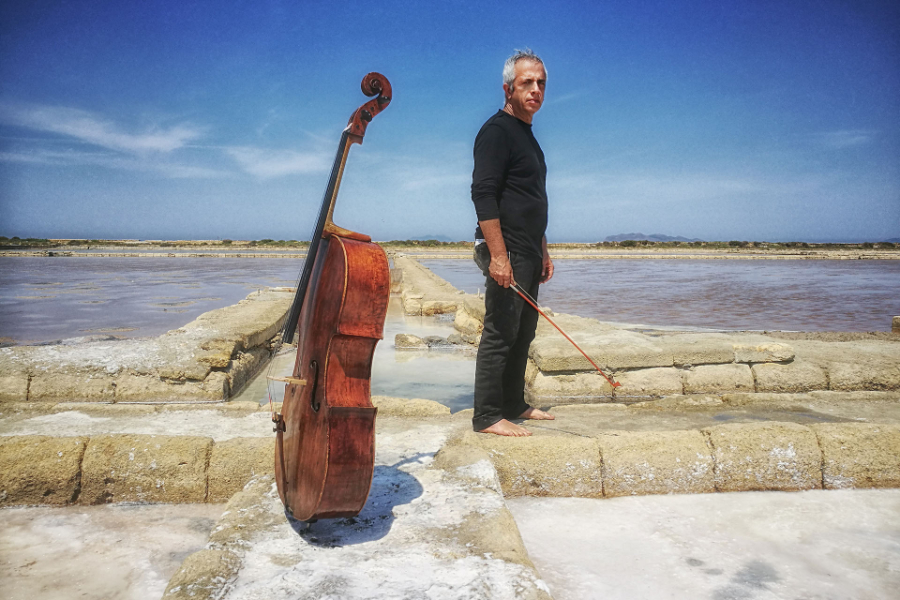The distinguished Sicilian composer and cello virtuoso Giovanni Sollima returns to the NFM. His concerts are always expressive and musically surprising. This captivating stage personality, known for his spectacular interpretations and excellent technique, together with musicians from the Polish Cello Quartet and the NFM Leopoldinum Orchestra conducted by Alexander Sitkovetsky, will perform works from the canon of Baroque music as well as some cult pieces by Nirvana and System Of A Down.
The evening will begin with the sparkling vitality of the Concerto in D minor RV 565 op. 3 no. 11 by Antonio Vivaldi. This piece belongs to the famous collection L’estro armonico from the beginning of the 18th century, which is also – according to Michael Talbot, a long-time researcher of Vivaldi’s legacy – one of the most valued works of this type for string instruments. Published in Amsterdam, the cycle quickly gained recognition and popularity in artistic circles, drawing the attention of esteemed artists of the time. Leonardo Leo, whose work was clearly influenced by the aesthetics of the late Baroque, and at the same time tendencies towards the galant style, was active around the same time. Sollima will play the Cello Concerto in D minor, which is an example of the composer’s mature idiom.
In addition to his excellent performing skills, the Italian cello virtuoso is also known for his own work, at times enigmatic and not without a spark of madness. The concert will include, among others, the slightly melancholic Hell I and the lively The Family Tree. The brightest point of the programme will be the premiere of Cello Chronicles – a work created with the NFM chamber ensembles in mind, which will accompany the soloist. Sollima ‘s trademark is breaking all stylistic conventions, perfect exmples of which are his numerous arrangements of rock songs by bands such as Gentle Giant, System of A Down, and Nirvana, as well as one of the most eccentric American artists Frank Zappa. Sollima, reaching for the whole spectrum of various means, builds an image of the cello as an absolute instrument.
Partner:


